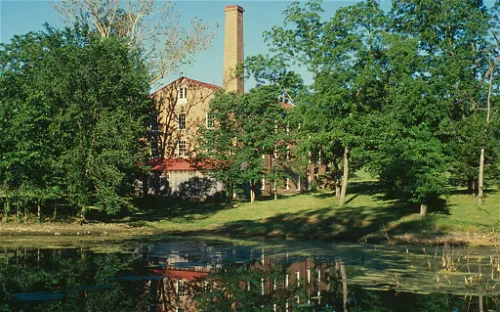Watkins Woolen Mill State Park and State Historic Site and its collection
Watkins Mill, located in Lawson, Missouri, is a well-preserved woolen mill that dates back to the mid-19th century. It is protected as the Watkins Woolen Mill State Historic Site, which not only preserves the mill itself but also its machinery and business records. This site offers a unique glimpse into the industrial history of the United States.
The First Planned Community
The Watkins Mill was built between 1859 and 1860 by Waltus L. Watkins. In addition to the mill, Watkins also established an 80-acre livestock farm and built housing for the mill workers, effectively creating one of the first planned communities in North America. This historical site provides a unique insight into the early development of planned communities in the region.
Recreational Activities at the Park
The Watkins Mill State Park offers a variety of recreational activities for visitors. The park features 96 campsites, a 100-acre lake that supports fishing, a large sand swimming beach, and trails for bicycling, walking, and horseback riding. These amenities make the park a great destination for outdoor enthusiasts and families looking for a fun and educational outing.
History & Anthropology Science & Technology Industrial heritage Historic house Open air

